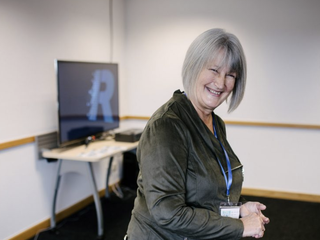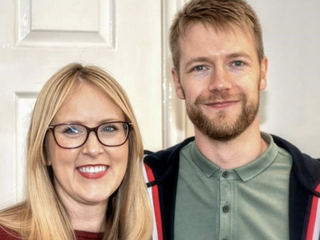Acute lymphoblastic leukaemia (ALL) treatment side effects
There are some potential side effects from treatment for ALL. These usually stop when the treatment stops and your hospital team can help you manage them.
Possible side effects
Different people have different responses to their treatment. Even if two people are having the same treatment, they may have a different experience.
You're unlikely to get all of the possible side effects. Try to bear this in mind when you read about them.
You may find it helpful to talk to your hospital team about possible side effects.
We also have vital information about your risk of infection, and vaccinations you may need.
Watch our short video about infection symptoms
Find out what to look out for and what to do:
Short-term side effects from steroids
Steroids can cause side effects such as:
- increased appetite
- mood changes and feeling irritable
- weight gain
- muscle weakness (especially in the legs).
If you have any of these side effects it’s worth discussing this with your hospital team, as they may be able to help.
Short-term side effects from chemotherapy
You may experience some short-term side effects from chemotherapy treatment. They could include:
- an achy flu-like feeling
- difficulty pooing (constipation)
- frequent watery poos (diarrhoea)
- bruising and bleeding
- extreme tiredness (fatigue)
- hair loss
- infections
- rashes
- a sore mouth or mouth ulcers (mucositis)
- feeling and being sick (nausea and vomiting)
- headache (this can also happen after a lumbar puncture)
- a blood clot – this could cause leg or chest pain, redness, or swelling
- damage to the nerves (peripheral neuropathy) which causes a burning feeling or pins and needles, or a loss of feeling, often in the hands and feet
- abnormal changes in your liver − this doesn’t usually result in any symptoms, but sometimes causes the build-up of a substance called bilirubin in your body, which makes your skin look yellow (jaundice).
It’s important to remember that most side effects you get are only temporary.
If you do have side effects, tell your healthcare team, as they may be able to help you manage them. For example, there are medicines you can take to help with feeling sick.
Find more information about coping with side effects.
Neutropenic sepsis
Chemotherapy can cause a low level of white blood cells called neutrophils, which means that your body can’t fight off infections as well as it should. This is called neutropenia or being neutropenic.
If you are neutropenic and get an infection, then you are at risk of a serious condition called neutropenic sepsis, which can be life-threatening.
If you think you have an infection, you should contact your hospital team straight away. See our information on the symptoms to look out for.
If you have any of symptoms for an infection and you cannot contact your hospital team, call 999 or go to A&E right away.

Supportive care
At the same time as you’re having active treatment for your illness, you will also be offered supportive care (which is different from palliative care).
Supportive care involves help with preventing infections, blood transfusions, mouth care, dietary advice, pain management and dealing with complications you may get from acute lymphoblastic leukaemia (ALL) and its treatment.
Here are some examples of supportive care you might be offered while you have active treatment:
When leukaemia cells are destroyed, they release a chemical called uric acid, which can damage the kidneys. Drugs called allopurinol and rasburicase can help. It’s also important to drink plenty of fluids to reduce the risk of kidney problems.
At the start of active treatment, the main side effect is that you produce fewer blood cells. This is known as bone marrow suppression. This can result in a low platelet count, which can lead to heavy bleeding. A platelet transfusion can help to protect you against this.
Another result of bone marrow suppression is low levels of a protein called haemoglobin, which can cause anaemia. This can make you feel tired and out of breath, but regular blood transfusions can help.
Because ALL and its treatment reduce your white blood cell count, you’ll be more vulnerable to infections. So your hospital team will take care to protect you from infection at all times.
They will give you an antibiotic to lower your risk of getting pneumonia (a serious chest infection), and a drug called acyclovir to stop you getting shingles, a virus that affects the skin around a nerve.
You may also be offered a treatment called a growth factor (commonly known as G-CSF). This stimulates your bone marrow to make more white blood cells called neutrophils and helps you to recover from the effects of treatment.
Read more about managing infection.
Long-term side effects from chemotherapy
With any type of chemotherapy, there’s always some risk of long-term or late side effects. These could include problems with the thyroid (a gland in your neck), heart or lungs.
Some chemotherapy drugs raise the risk of developing other types of cancer later on, but this is very rare. Your ability to have a child (your fertility) may also be affected by chemotherapy.
The risk of long-term side effects will depend on how many cycles of treatment you’ve had, the intensity (strength) of the treatment and whether you’ve had a transplant or not.
Every case is individual, so your hospital team will talk to you about this in more detail.

